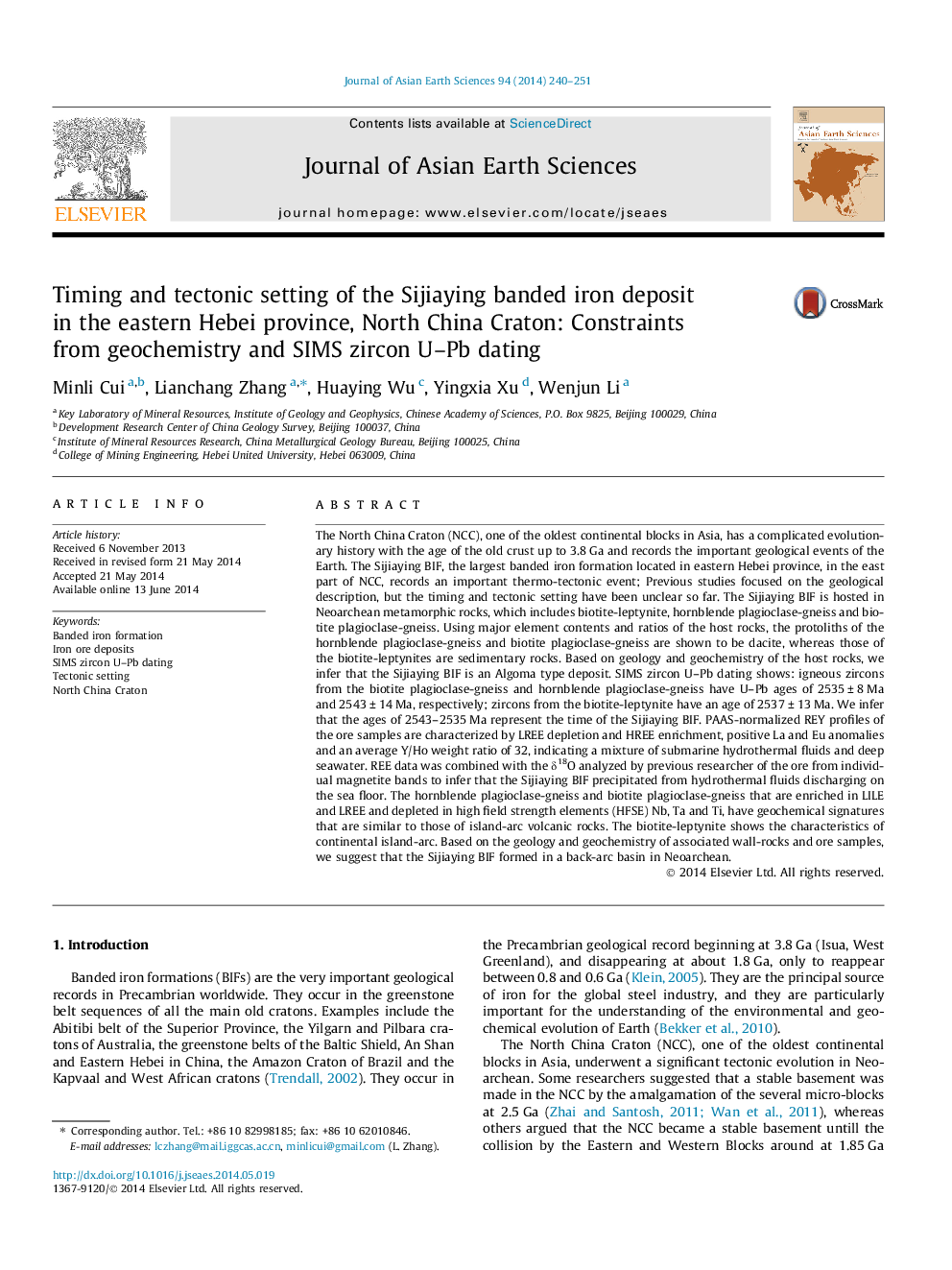| کد مقاله | کد نشریه | سال انتشار | مقاله انگلیسی | نسخه تمام متن |
|---|---|---|---|---|
| 4730593 | 1640374 | 2014 | 12 صفحه PDF | دانلود رایگان |

• Geological characters of the Sijiaying iron deposit are typical of Algoma-type BIFs.
• The Sijiaying iron deposit was formed at 2543–2535 Ma.
• The iron deposit was formed in a back-arc basin during Neoarchean.
The North China Craton (NCC), one of the oldest continental blocks in Asia, has a complicated evolutionary history with the age of the old crust up to 3.8 Ga and records the important geological events of the Earth. The Sijiaying BIF, the largest banded iron formation located in eastern Hebei province, in the east part of NCC, records an important thermo-tectonic event; Previous studies focused on the geological description, but the timing and tectonic setting have been unclear so far. The Sijiaying BIF is hosted in Neoarchean metamorphic rocks, which includes biotite-leptynite, hornblende plagioclase-gneiss and biotite plagioclase-gneiss. Using major element contents and ratios of the host rocks, the protoliths of the hornblende plagioclase-gneiss and biotite plagioclase-gneiss are shown to be dacite, whereas those of the biotite-leptynites are sedimentary rocks. Based on geology and geochemistry of the host rocks, we infer that the Sijiaying BIF is an Algoma type deposit. SIMS zircon U–Pb dating shows: igneous zircons from the biotite plagioclase-gneiss and hornblende plagioclase-gneiss have U–Pb ages of 2535 ± 8 Ma and 2543 ± 14 Ma, respectively; zircons from the biotite-leptynite have an age of 2537 ± 13 Ma. We infer that the ages of 2543–2535 Ma represent the time of the Sijiaying BIF. PAAS-normalized REY profiles of the ore samples are characterized by LREE depletion and HREE enrichment, positive La and Eu anomalies and an average Y/Ho weight ratio of 32, indicating a mixture of submarine hydrothermal fluids and deep seawater. REE data was combined with the δ18O analyzed by previous researcher of the ore from individual magnetite bands to infer that the Sijiaying BIF precipitated from hydrothermal fluids discharging on the sea floor. The hornblende plagioclase-gneiss and biotite plagioclase-gneiss that are enriched in LILE and LREE and depleted in high field strength elements (HFSE) Nb, Ta and Ti, have geochemical signatures that are similar to those of island-arc volcanic rocks. The biotite-leptynite shows the characteristics of continental island-arc. Based on the geology and geochemistry of associated wall-rocks and ore samples, we suggest that the Sijiaying BIF formed in a back-arc basin in Neoarchean.
Journal: Journal of Asian Earth Sciences - Volume 94, November 2014, Pages 240–251